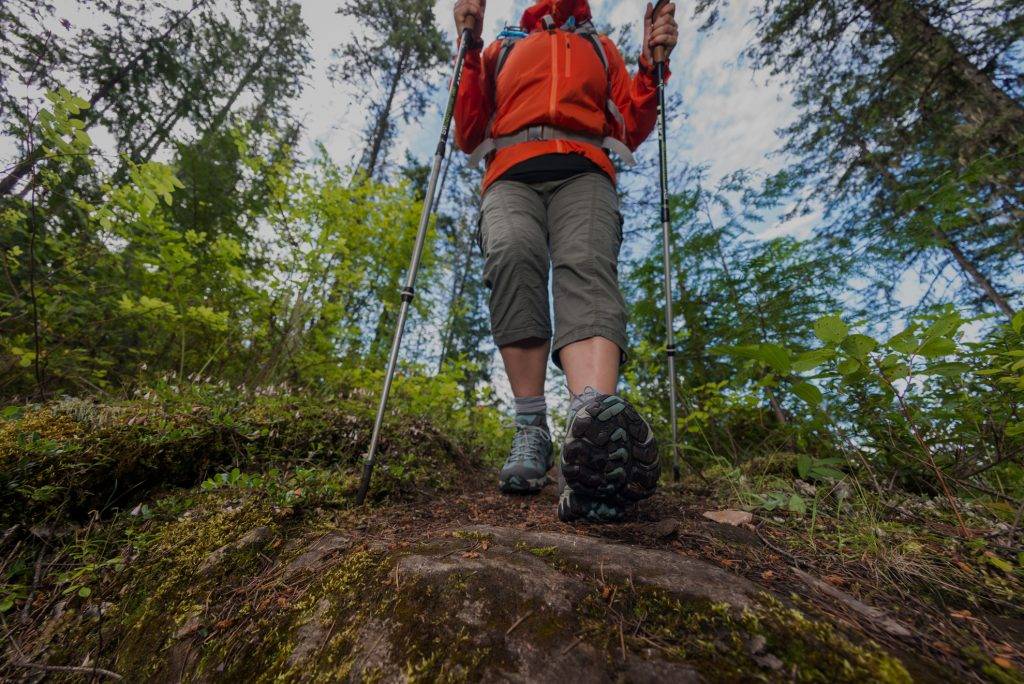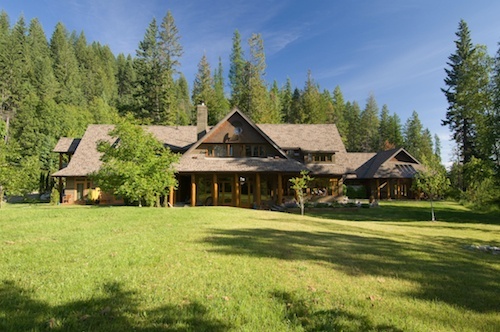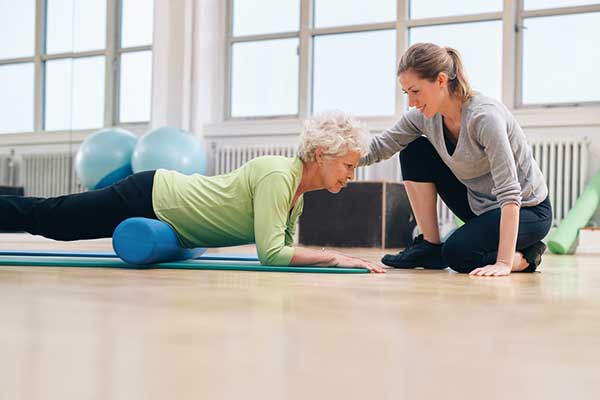Q&A: What are the best hiking shoes and hiking poles?

Q: What are the best hiking shoes and hiking poles?
A: Hiking Footwear is all about function and fit. Since we all have wildly different feet, there is no one best brand, but there are ideal shoe types for what we aim to get into. If you are hiking on smooth trail surfaces (gravel) and have reasonably strong ankles, a very light “trail-runner” would be fine. As their name suggest, trail-runners are a hybrid between street running shoe and hiking boots. They offer great traction and are lightweight, but aren’t as stable as a hiking boot. Here are some trail-runners we recommend. If your trails are more technical and have loose rock, roots, rock steps, are quite narrow, and your ankles are prone to rolling, an over the ankle light to medium-weight hiking boot will best serve your needs. If you are planning a multi-day backpacking excursion on the Appalachian or Pacific Crest trails, a well broken-in, heavier-duty, stiffer over-the-ankle hiking boot will over the traction and support you need for a long journey.
- Ensure the fit is snug when laced. You want to lace your boots firm, but not tight—somewhere around an 7 or 8 out of 10 on the pressure scale. Ideally the shoe will have even pressure across your entire foot once laced and not have “hot spots”, or places where your boot will rub excessively when hiking, causing a blister.
- The right size will need to find a good middle-ground. It needs to have a bit of room in front of your toes so they don’t hit against the shoe/boot when going downhill, but not so roomy that the heel lifts when walking uphill. Read our full guide on how to properly select a hiking shoe.
Most larger retailers (MEC, REI) will have fake rock ramps for you to demo your fit on. Make sure you use this, so you can see how the boot performs on all angles. After choosing the best fitting shoe, ensure that you can take them home to wear around the house for a couple of days to ensure the fit is optimal (and still return them if not).
Trekking poles are a fantastic addition to your hiking gear arsenal. They distribute workload and force, allowing you to hike farther and faster while providing additional stability and protecting your joints. They propel you forward on flat and uphill terrain, and become a brake, or shock absorber on downhills, unloading our knees from upper body weight. 30% of your effort should be distributed to your arms when using trekking poles, so they provide a full-body workout while hiking.
Choosing a hiking pole is less personal than choosing hiking shoes or boot. When choosing your poles, follow these tips:
- Ensure that when they are extended, your arm can be bent at 90 degrees while holding the handle.
- Look for poles that have built-in shock-absorbing springs or cushion. This addition will keep the jarring out of your shoulders, elbows, and wrists when the poles make contact with the ground and is well worth the small cost increase.
- Carbon poles are nice, but not necessary. While these poles save weight, which is great if you are doing a multi-day backpacking trip, their increased price tag isn’t usually worth.
- Choose a cork grip if available. Cork is a great, and natural, material for hiking poles that offers both good grip, breathability, and traction when wet.
- If you want the full-body workout when you go for your evening walk around the neighborhood, choose a set that comes with rubber tips that you can put on for urban fitness hiking.
What is Mountain Trek?
Mountain Trek is the health reset you’ve been looking for. Our award-winning hiking retreat, immersed in the lush nature of British Columbia, will help you unplug, recharge, and roll back years of stress and unhealthy habits. To learn more about the retreat, and how we can help you reset your health, please email us at info@mountaintrek.com or reach out below:










